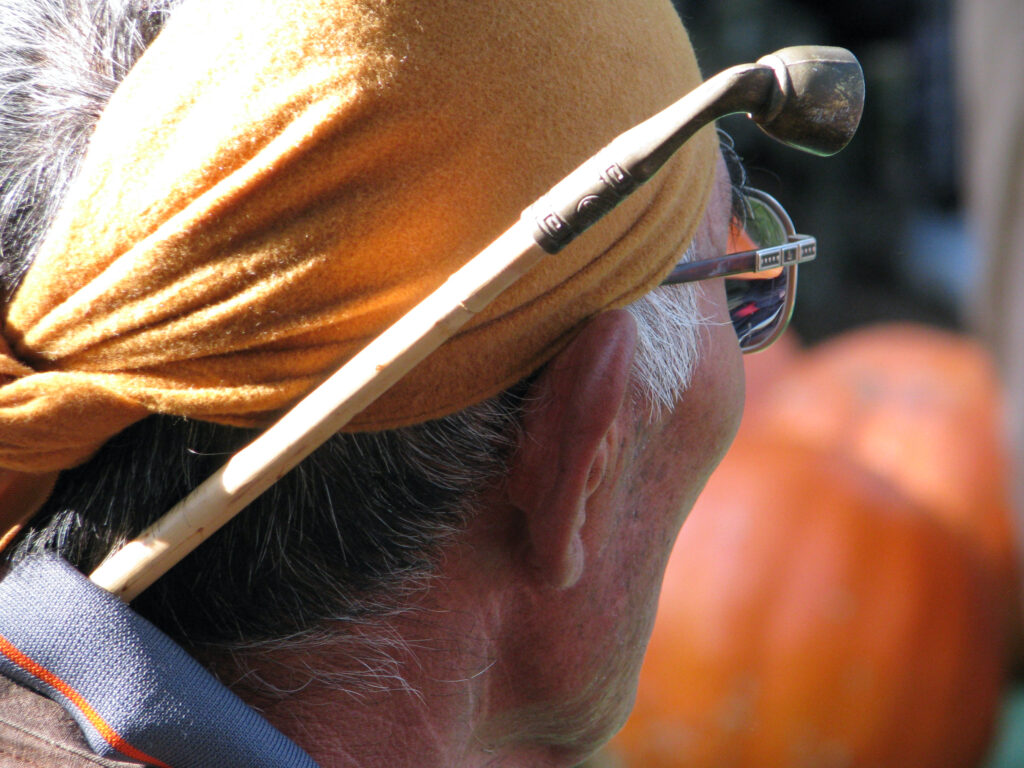“The Island of Quelpart” is an article from the Bulletin of the American Geographical Society, Volume 37 – Published January 1, 1905. You can download the article here.
The map is from the original article, The accompanying note reads: The map is drawn from Asie 1:1,000,000, Flle 36 N. 126 E., published by the Service Geographique de 1’Armee, Paris, 1898, corr. I904.
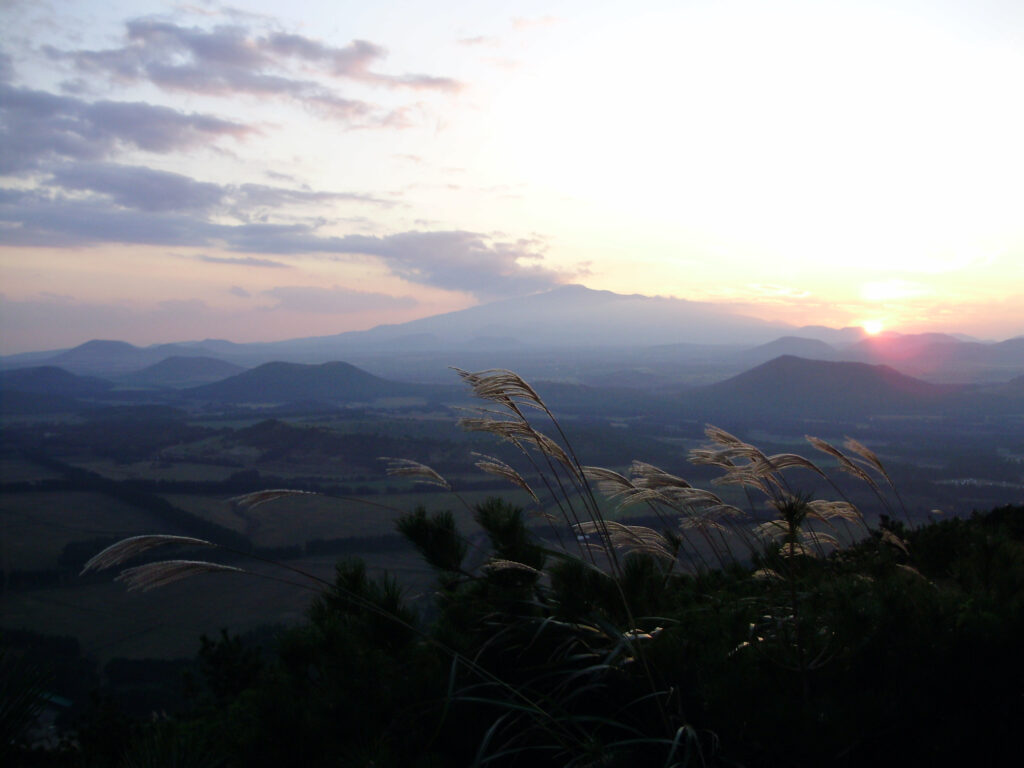
The island of Quelpart lies some fifty miles off the southern coast of the Korean mainland, but only thirty from the outer edge of the line of islands that fringe the coast of the peninsula. It is, in all probability, geologically one with the range of mountains which forms the backbone of Korea, and which finally sinks beneath the waters of the sea off its southern coast. It is by far the largest of the thousands of islands which form the Korean Archipelago, being forty miles long from east to west and twentytwo miles wide from north to south. The whole island is dominated by the central peak, Mt. Auckland, or, as the Koreans call it, Hal-la San, which means, ” The Peak which Reaches toward the Milky Way.”
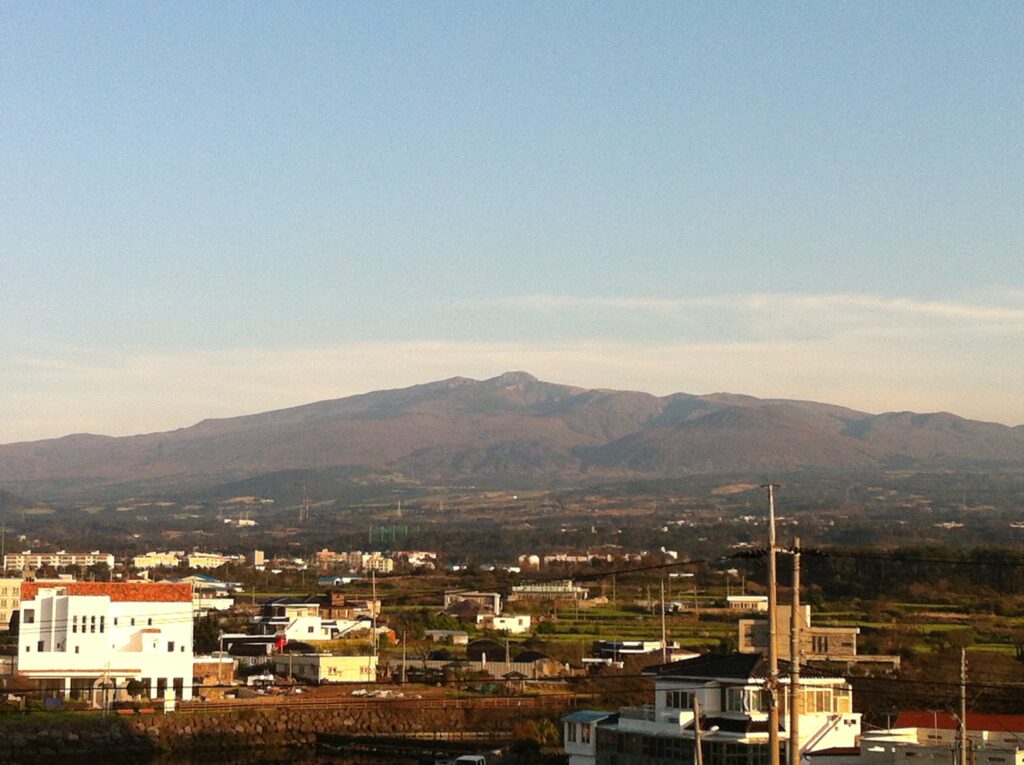
The central peak of Hal-la San is about 6,550 feet high. At the very summit there is a small lake lying in what must be the crater of the extinct volcano. One of the main spurs of the mountain is called Chang-ol-ak, or “Long Point Peak.” On the summit of this, also, there is a small pond. There are many lesser peaks, such as Vine Peak, Many Men Peak, Hog Peak, Deer Peak, Hat Peak, Water Peak, Sunset Farewell Peak, etc. The people say that if any one makes a noise of any kind near the lake at the summit fog and cloud will immediately form and enclose him. A certain well or spring on the mountain-side is called “Bushel Well,” and it is said that if any one drinks the water he will be able to leap by one hundred paces at a step. They believe that this is why the Mongols were so strong when they held the island five centuries ago.
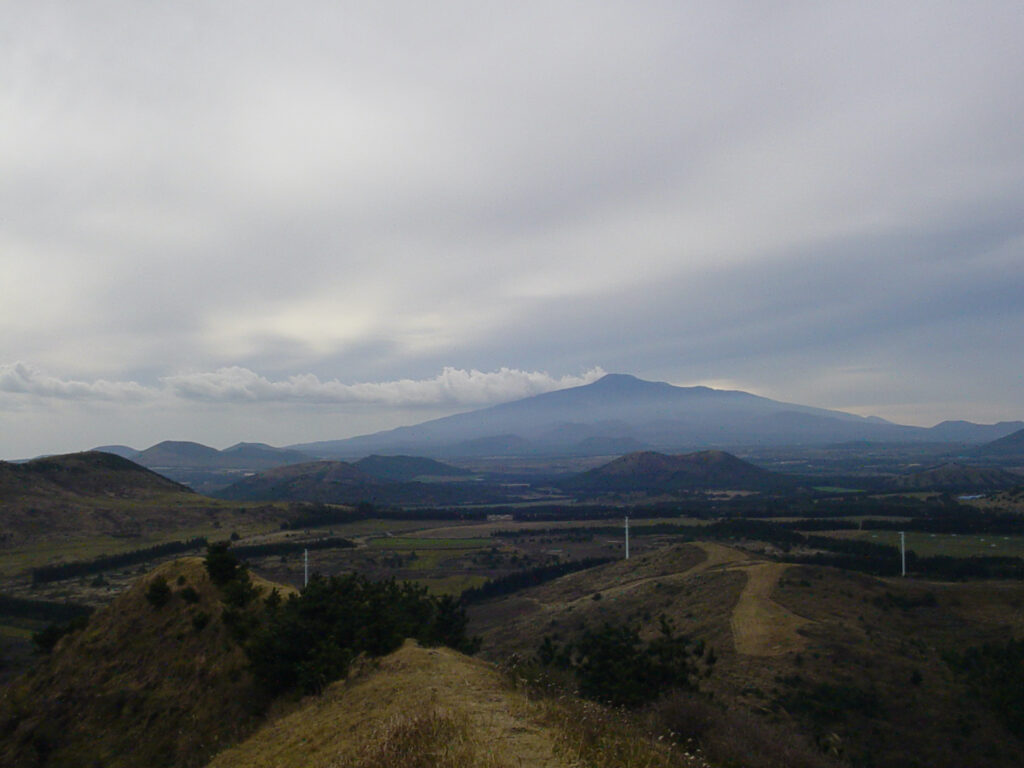
The entire island is apparently formed by the sloping sides of this mountain, with its many subsidiary spurs. Its origin is manifestly volcanic, for a close examination reveals the fact that there were two distinct streams of lava which flowed from the ancient crater-one toward the north and one toward the southwest. Where the northern stream of lava reached the sea it is twenty miles wide, while the southern one at the sea-shore is thirty miles wide. This prevalence of lava on certain well-defined portions of the island gives rise to two distinct kinds of soil. Where the lava prevails the land is stony and sterile, but where the lava is not found the soil is a rich black mould. Two-fifths of the island are of the former kind and three-fifths of the latter. Toward the east and west the land slopes away to the sea in a long, beautiful sweep, but on the north and south the slopes are steep, and there are many deep gorges.
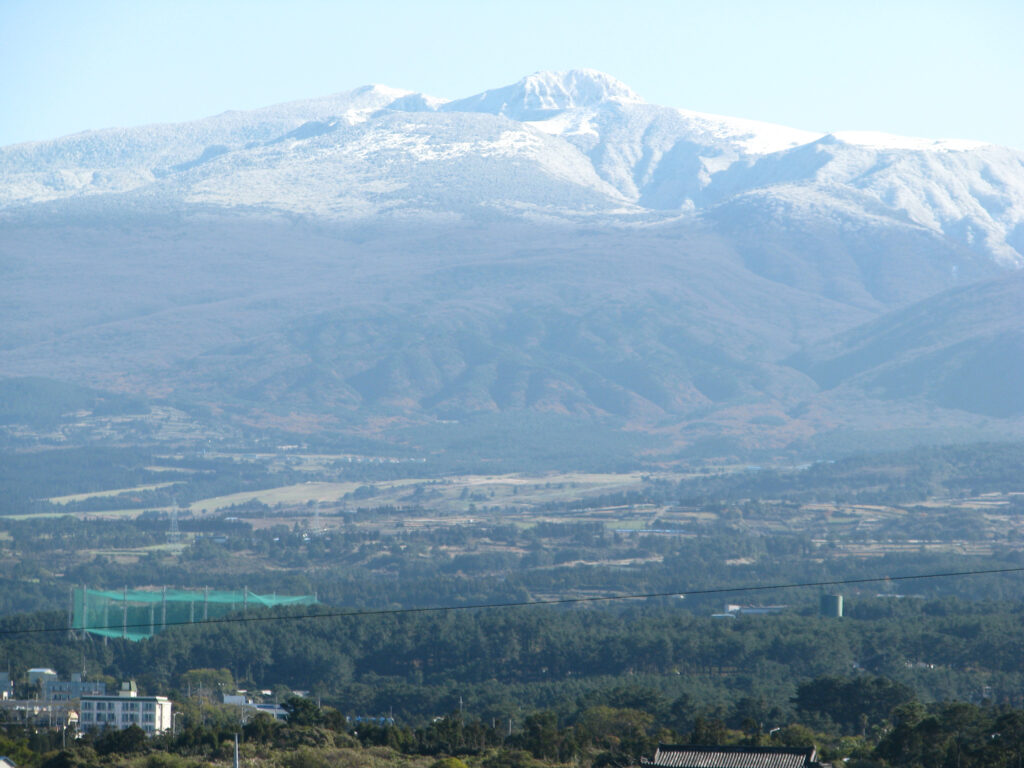
About the island there are a few smaller ones, notably ” Cow Island,” at the east. This is several miles long. The others are all along the southern coast, and are very small, about a dozen in all. On Cow Island there is a cave at tide-level into which half a dozen boats can go together. In the seventh and eighth moons no boats will enter it, because they say that it will anger the dragon which lives there, and it will cause great storms of rain and wind. This superstition, doubtless, arose because these months are those in which typhoons occasionally sweep over the island.
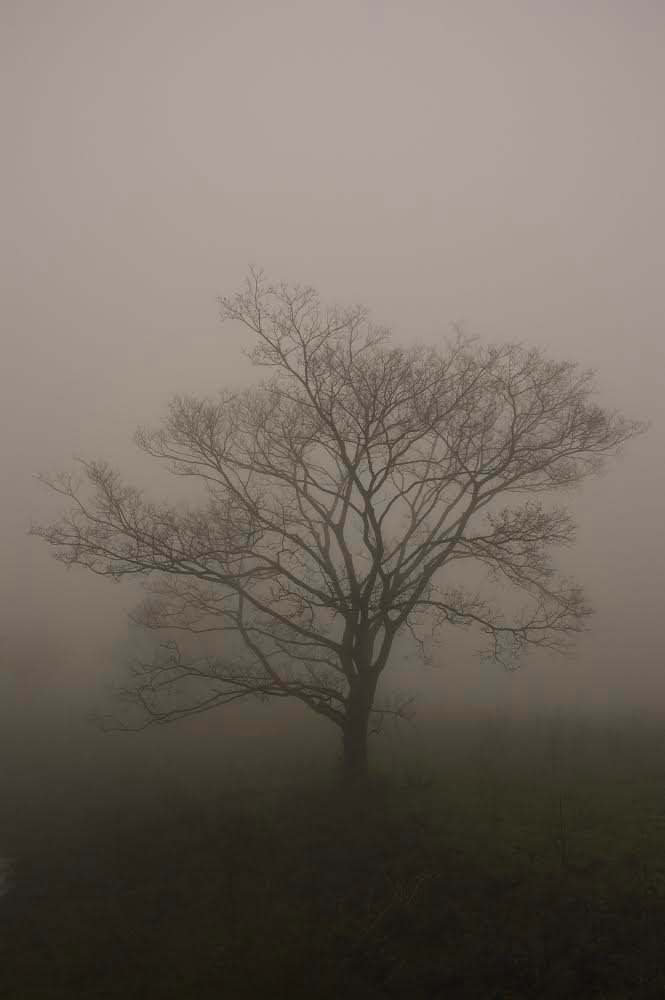
Quelpart is of some importance as forming a link in the ethnological study which has for its object the determination of the origin of the Korean people. Tradition says that in the dawn of history the island was covered with a tangled forest and was without habitants. From a hole in the ground called Moheung, in Chin-san, on the north side of the main peak, three men emerged. They were Yang-eulla, Ko-eulla, and Pu-eulla, and it was in this order that they emerged. They lived by hunting, they dressed in skins, and they ate raw meat. One day three wooden chests floated in from the east or southeast covered with brown clay. A man mysteriously appeared, clothed in brown, with a red belt. He opened the chests before the wondering eyes of the three inhabitants of the island and disclosed three women clothed in blue (symbol of the East), three calves, three colts, three dogs, three pigs, a quantity of seeds, and some stone dishes. The mysterious man said, “I am an envoy from Japan. Our king had three daughters, and as you have no wives he has sent them to you at my hand. Take them and make a great kingdom here.” Then he mounted a cloud and rode away.
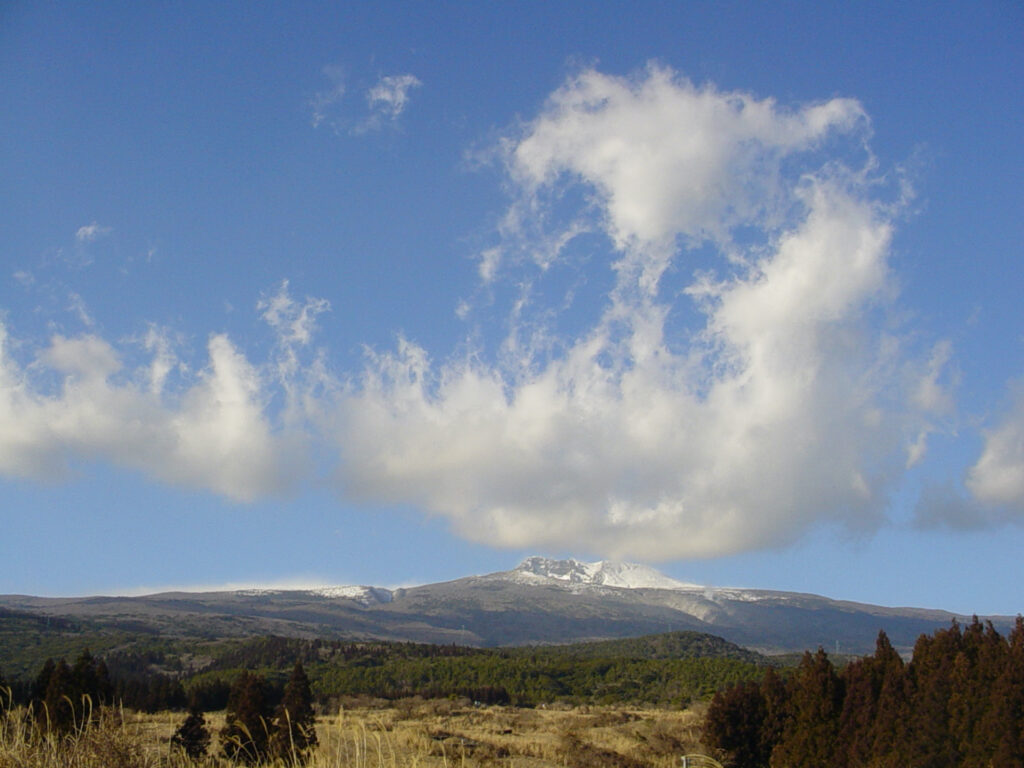
Each of the men took his wife and other chattels and settled down. Each of them built a town, enclosing as much land as one could shoot across with a bow. It would seem that as time went on the Ko family obtained the ascendency, for tradition says that after fourteen generations had passed three brothers named Ko-hu, Ko-ch’ung, and a third, whose name is not given, crossed by boat to the mainland and visited the capital of the kingdom of Kye-rim (which name was changed to Sil-la later).. ” The astrologers of Kye-rim told the King that the “Guest Star had appeared in the southern heavens, and that visitors might be expected from that direction soon. True to their word, the three Ko brothers landed at a port called T’am-jin (now Kang-jin) and came up to the capital. They were hospitably received, and the King conferred upon them the titles Sung-ju, or ” Lord of the Star,” Wang-ja, or “King’s Son,” and “To-na, or “The One who is in Town.” For many centuries these continued to be the names of high official grades on the island of Quelpart.
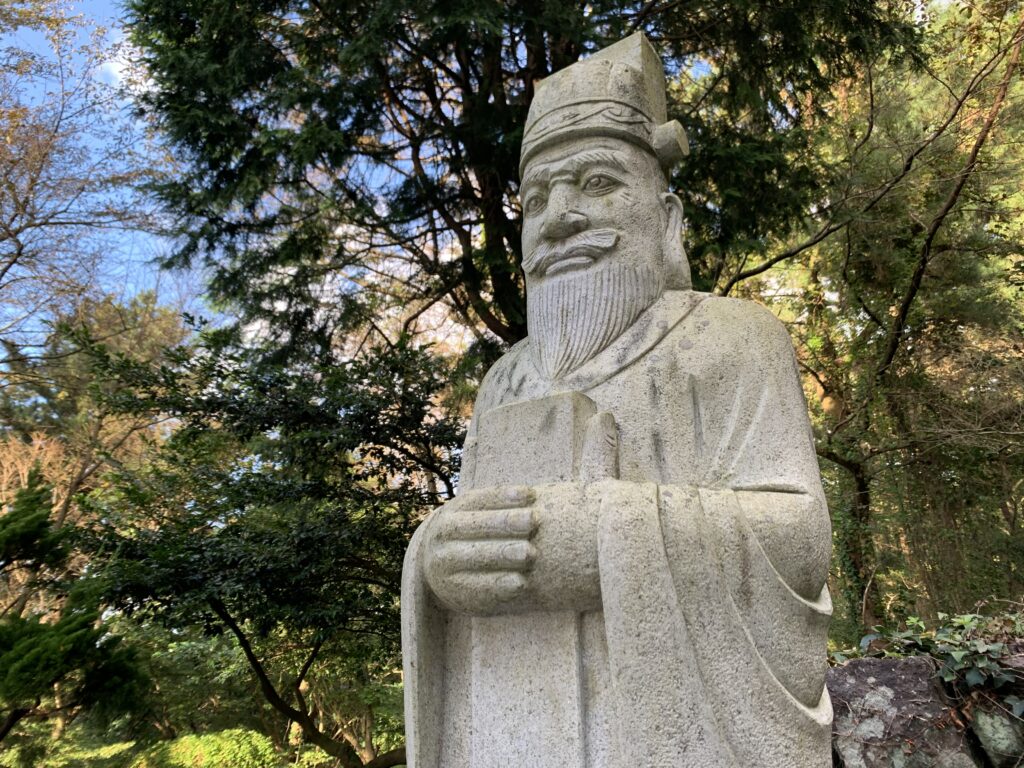
The King also named their island T’am-na. Some say it was so named because the three brothers landed at T’am-jin. Another rendering of the name was T’a-na. In these words the syllable na was the ancient word meaning “kingdom.” The date of these events is not given, but it must have been very early, for we read that in the middle of the fifth century of our era the kingdom of T’am-na ceased paying tribute to Pak-che, which was a powerful kingdom in southwestern Korea, and contemporaneous with Kye-rim or Sil-la. The King of Pak-che sent an army to enforce the tribute, but the King of T’amna, hearing that this was determined upon, sent in haste and renewed his allegiance. When Pak-che fell before the combined arms of Sil-la and China, and Sil-la obtained control of practically the whole of the peninsula, the King of T’am-na, named Chwapyung To-dong Eum-yul, came and did obeisance to the King of Sil-la. Sil-la was overthrown, and the peninsula passed into the the hands of the Koryu dynasty in 918 A.D., and the Crown Prince of T’am-na, named Mallo, came to the capital and swore fealty to the new king. The latter conferred upon him the title of Sung-ju Wang-ja.

About the year 1150 the island of Quelpart was reduced to the status of a mere prefecture of Koryu. The records say that the people of the island were very unruly. The Mongols invaded Koryu in I231, and immediately became masters of the situation. For more than a century Korea was at their mercy. But small mercy they showed. They established on the island of Quelpart a horse-breeding station, in order to recruit their cavalry, and even after the Mongol power had waned and fallen in China, the halfsavage Mongol horsemen on Quelpart continued to defy the armies of Koryu. This was because Koryu had sunk to a state of utter weakness through the baseness and effeminacy of her rulers, and any one with a little courage and force could work his will wherever he wished. At last, however, they were successfully attacked; but they appealed to the Mongol Emperor, and he sent to Koryu suggesting that when he was obliged to leave Peking he would make his asylum on Quelpart. This frightened the King, and he hastened to say that the expedition to Quelpart was not against the Mongols but to catch some Japanese freebooters.

In 1368 the Mongol dynasty fell, and the Mings came to the throne of China. The Mongol horsemen, however, held their own as yet on Quelpart. Five years later the Ming Emperor sent to the King of Koryu demanding 2,000 of the celebrated horses that were bred on Quelpart. In fear and trembling the King sent to the island for them; but the Mongols said, “We are Mongols. Why should we give horses for our enemies?” They sent 300 of the animals, however. This by no means satisfied the Emperor, and he demanded the full 2,000. The King had to proceed to extremities, and an expedition of 25,000 men, in 300 boats, was sent to the island. Part of the fleet was wrecked by a storm, but the rest landed and attacked the Mongols, who were 3,000 strong. The latter were driven back, and at last beaten, and had to surrender. Their leader, T’ap-chi, was cut in two at the waist, and many others committed suicide. A large number who refused to submit were cut down. This ended the rule of the Mongols on the island for all time.
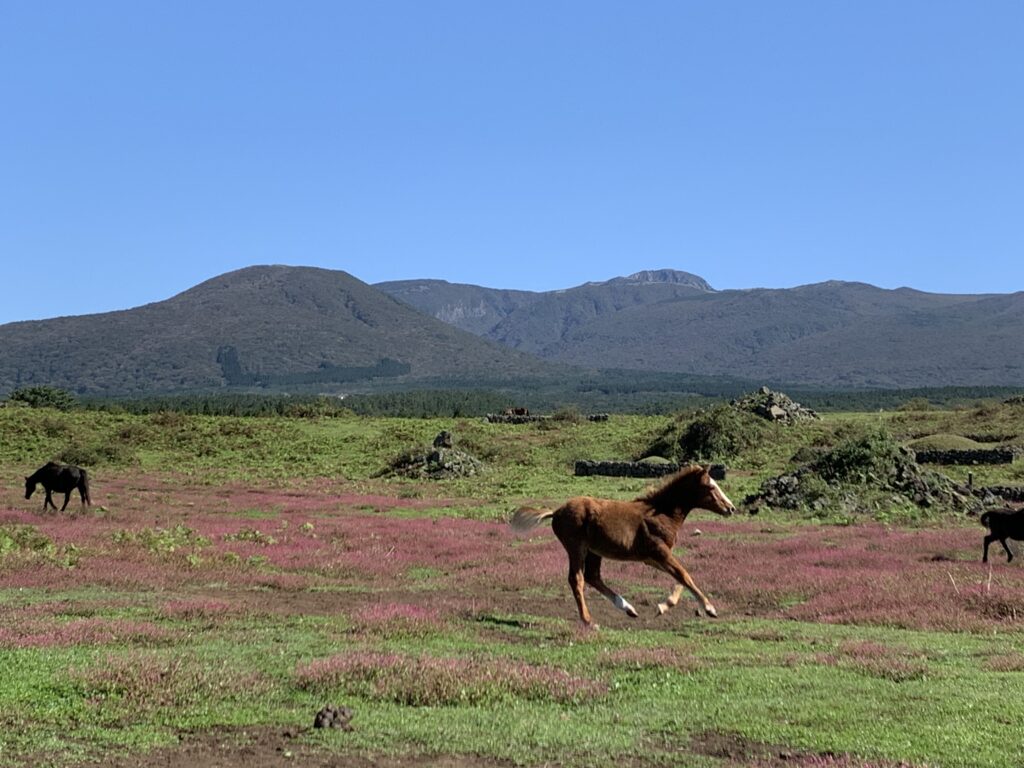
That Quelpart has been dominated by volcanic influences has, as we have shown, been fully demonstrated. But we do not have to depend simply on a geological examination to prove this, though, of course, there could be no better proof. The following account, taken from the great Korean geographical gazetteer called the Yo-ji Seung-nam, is evidence of volcanic action even within the last few centuries. In the fifth year of King Mok-chong of Koryu (1003 A. D.) a mountain suddenly rose from the water. There were four holes, and from them poured “floods of red water,” which soon turned to stone. Five years later another wonder of the same kind occurred, and the king sent a celebrated scholar to examine it. The people reported to him that when the mountain came up there was a dense cloud and fog, accompanied with earthquakes and thunderings. After four days it was all over; but there stood the new mountain, over a hundred feet high and twelve miles around. There was no wood nor grass on it. It was constantly covered with a pall of smoke, but when the wind blew the smoke away from a portion of the mountain it was seen to be of a dirty yellow colour. No one can fail to recognize in this a distinct volcanic action.
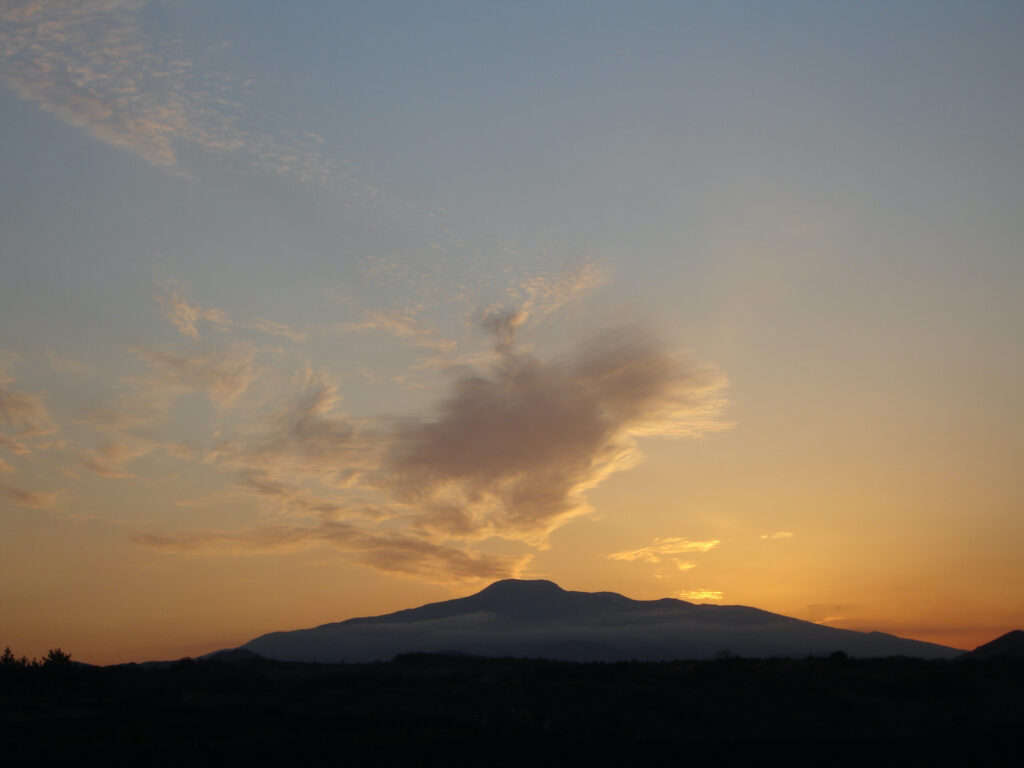
The natives say that snow lies on the summits of the mountain until into June; but the climate of the general level of the island is so warm that certain vegetables grow all winter long on the southern side. In February the grass is sometimes four inches high and flowers are in bloom.
One observer says:
All the mountains as well as the slopes on the east are covered with a thick growth of oak, in which deer, wild hogs, hares, and other animals abound. There are no tigers nor bears. The hills that have no trees are covered with the peculiar Korean turf which makes such an exquisite lawn. This is even prettier on Quelpart than on the mainland, and one frequently comes across natural lawns, four or five hundred yards square, covered with this velvety turf, without a single weed visible. There are no good harbours on the coast of Quelpart, and this lack of shelter, together with the prevalence of high winds, makes navigation very difficult.
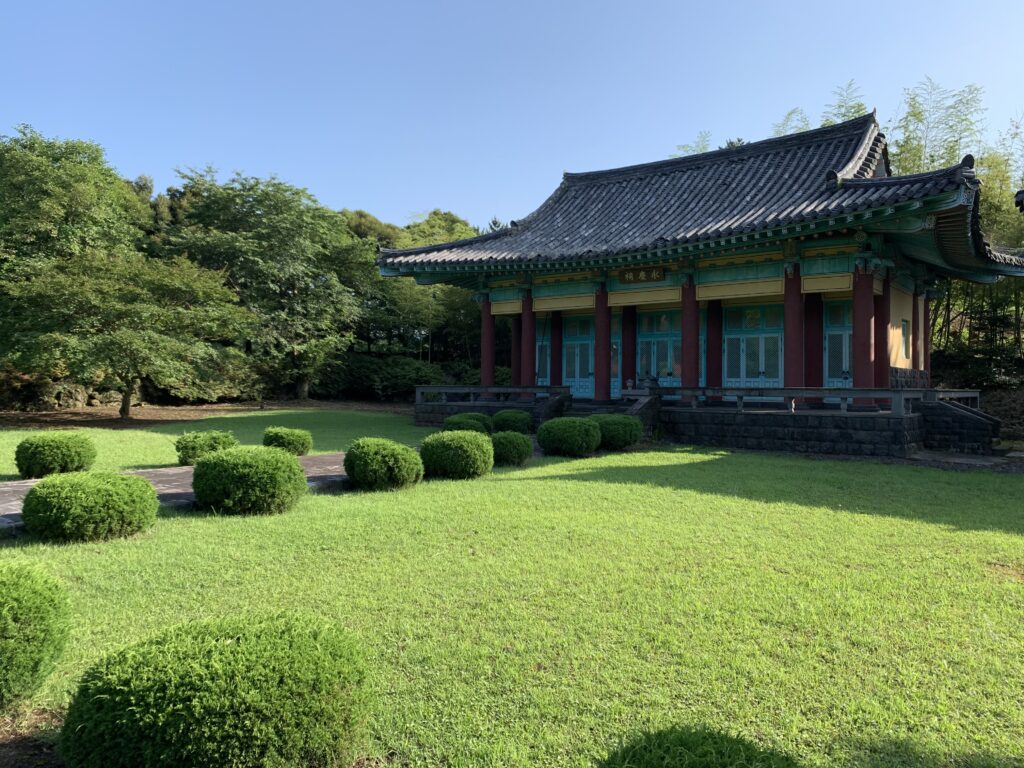
Very few foreigners have ever visited the island, and of these few hardly any made a careful examination of it; but in the spring of 1900 the Korea agent of the British and Foreign Bible Society, in company with another foreigner, made a complete tour of the island, and made a very careful examination. Their account is particularly instructive; and as it appeared only in a small local periodical, we shall quote extensively from it as embodying the fullest information obtainable at the present time.
These careful observers say that there is a surprising absence of springs and streams, for in making their trip around the coast they crossed only two streams; and this, too, just after heavy rains. There are good springs in the one town of Che-ju, and it is more than likely that their being there is what determined the situation of the island capital. In the other towns there are none, and the people have to use rain-water, which they store in artificial ponds. Where the water from the melting snow goes is a mystery.
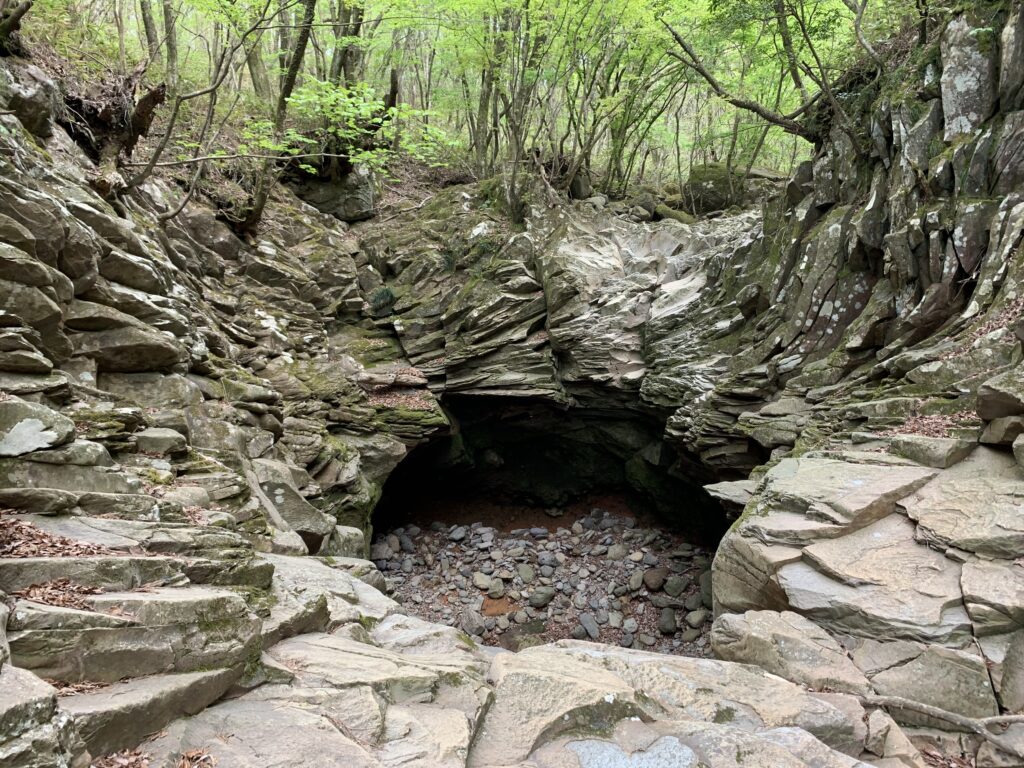
The island is divided into three prefectures-a northern, southwestern, and southeastern. Che-ju is the northern one, with the town of the same name as its administrative centre. This is also the seat of the Moksa (shepherd) or Governor of the whole island. It is a walled town, and contains about 1,200 houses. This would mean a population, perhaps, of about 6,ooo; but this is a minimum estimate, for it is more than likely that each house has more than five inmates. The southwest prefecture is Ta-chung, with a town of about 2,000 people in its centre. This town is also walled. In the southeast is the prefecture and town of Chung-wi. The town has 300 houses, with at least 1,500 people. It is stated that there are upwards of one hundred villages on the entire island, and that the population mounts up to the respectable figure of 100,000. This is the native estimate, and cannot be relied upon for accuracy. The three walled towns mentioned lie in the shape of an isosceles triangle, with Che-ju for the apex and the line from Ta-chung to Chung-wi for its base. It is about twenty-four miles from Che-ju to either of the other two, and they in turn lie thirty-nine miles apart.
Ever since the beginning of the present dynasty the island has formed, from an administrative standpoint, a part of the southwestern province of Chul-la on the mainland of the peninsula, except for a short period just after the Japan-China war, when it was denominated a separate province. The travellers above mentioned state that the villages lie either along the coast, where the gathering of sea-products forms such a large part of the industry of the people, or near the foot of the mountains, where fuel is plentiful and the people live by agriculture and the rearing of stock. The space between the shore and the foothills is largely unpopulated, and wide stretches of rich soil lie permanently fallow. This may seem a very curious condition of things; but we believe it is not hard to explain. The difficulty of obtaining water makes it more convenient to live near the foot of the mountains, for there the melting snows provide this necessity; and, besides this, we find that the people who raise cattle keep them on the plains in winter, but drive them into the mountains in summer, so that they may not destroy the fields of grain. It is most natural, then, that they should place their houses between the fields and the summer grazing lands of the cattle, both for their own convenience and the safety of their crops. Those that live on the shore are compelled to do so because they follow the sea so largely. On the other hand, this peculiar adjustment of the population may represent some very ancient social demarcation, or even difference of race, which still awaits investigation. The early traditions of the mainland say that in most ancient times there were two kinds of people-those living along the coast and those living among the mountains. The wide stretch of land lying between these two, in Quelpart, is considered common property, and any one who wishes can cultivate it at pleasure, except in the immediate vicinity of the villages.
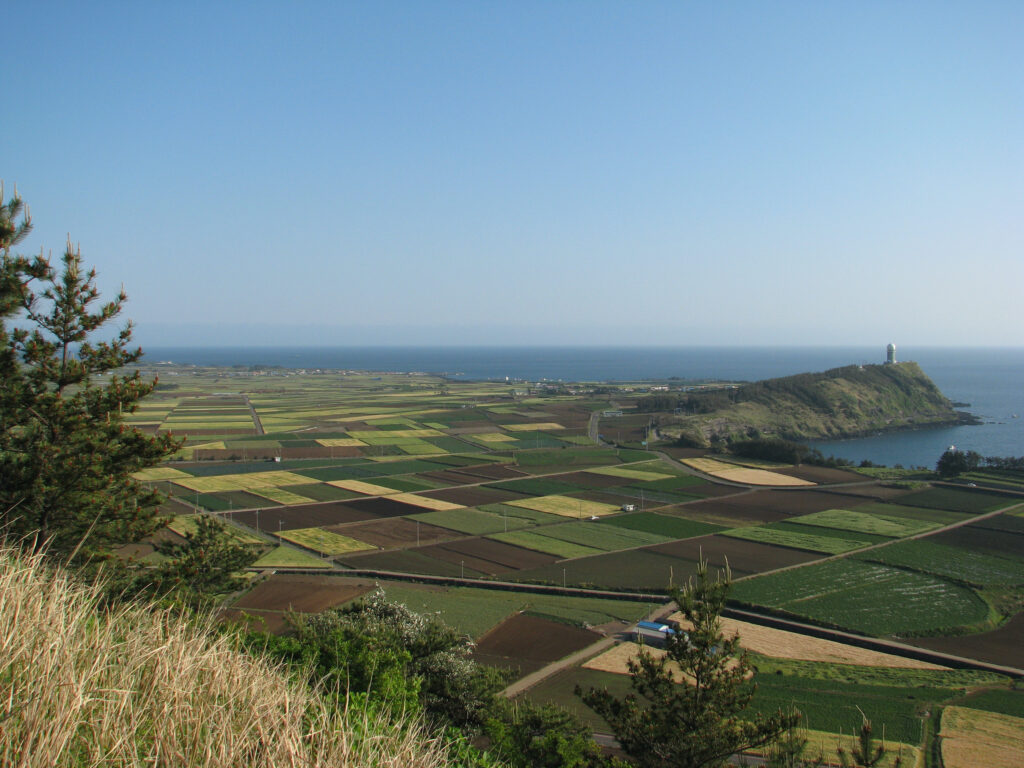
Millet is the most important cereal raised, and it forms the staple article of diet. Rice is a luxury that only officials and the wealthy few can afford, and it is mostly brought by boat from the mainland. Moderate quantities of upland rice, sorghum, beans, barley, wheat, potatoes, tobacco, buckwheat, yams, turnips, and cabbage are raised. Some ten varieties of medicinal plants are exported, and a little fruit is grown, mostly oranges, pomeloes, and peaches. The people do not eat much meat, but beef, horse-flesh, pork, dog-meat, fish, and pearl oysters are consumed in moderate amount. We are told that crabs, common oysters and the various kinds of clams that are so plentiful along the shore of the mainland are not found near Quelpart. The sea-bottom in the vicinity of Quelpart is too rocky to admit of fishing with nets, and it is all done with hook and line. Much of the fishing is done from a curious sort of raft made by binding together ten short logs of wood and erecting a platform upon them. This is propelled by a scull. The most curious thing about this craft is its name. It is called the “bamboo boat,” though the bamboo does not enter into its construction in any way.
In this connection it is worthy of note that some of the aboriginal tribes of Formosa use a raft of the very same kind which is made of bamboo. The question is whether this name in Quelpart is not the survival of a name brought from the south and continued even after the word had lost its real significance. This is one of many little indications which point to the southern origin of these people.
Pearl oysters and various kinds of sea-weed are exported to the mainland in considerable quantities, or were until the Japanese encroached upon the fishing grounds and swept the coast clean of pearl oysters, after which the sea-weed alone was exported. These pearl oysters are very large, and are not bivalves, but cling to the rock with a single shell. It is from these that the Koreans get the mother-o’-pearl with which to inlay their cabinets. The meat of this shell-fish is considered a great delicacy. Only the muscular part is used. This is cleaned and dried, in which process it turns to a rich dull red colour. It is sold in Seoul strung on sticks, each stick holding ten.
Of sea-weeds there are several different varieties. Some of them are used as fertilizers, others as food, and others still are sold to the Japanese for the manufacture of carbonate of soda. The coarser kinds that grow on the surface near the shore are the ones used as fertilizers, but the delicate edible ones grow further out at the bottom. It is a most curious fact that all the diving for pearl oysters or sea-weed is done by the women. From the earliest times the women have monopolized this work, which until within the last ten years they always did in a nude state. There was a strict law that during the hours of fishing no man should go within sight of the fishing-grounds. But when the Japanese began to encroach upon these preserves they paid no attention to this law, and consequently the women were driven out of the business. The people of Quelpart appealed to the central government to stop the utterly lawless encroachments of the Japanese, but without the least success. As it was a matter of life and death with thousands of the people of Quelpart, the women gradually learned to make use of a sort of bathing costume, and so resumed their occupation. Armed with a sort of sickle, and carrying a bag, to which an empty gourd is attached as a float, they swim out a quarter or half a mile from shore, leave the bag floating on the surface and dive ten, twenty, or even thirty feet to the bottom. They cut the sea-weed with the sickle or tear off the pearl oyster, and then rise to the surface and deposit their booty in the floating bag. It takes from twenty to forty minutes to fill the bag, but they do not return to shore until it is done. As may easily be imagined, these women are of splendid physique, and their courage and endurance are marvelous, for the season begins as early as February. Of late years the Japanese have come with diving apparatus and stolen most of the pearl oysters.
This brings up the whole question of woman’s status in Quelpart. They do by far the major part of the work, even to bullock-driving. Nowhere else in all Korea are women allowed to carry water, but here they do it all, and often-times it has to be brought a great distance. They use for this purpose abasket swung from the shoulders, and in this basket they carry earthen pitchers to hold the water. This startling variation from the universal custom indicates some ancient difference in habit, and at least proves that Quelpart has not kept up with the mainland in the slow growth of civilization.
Not only do the women do the most of the work, but they exceed the men in number. On the streets one sees three women to one man. As a rule these women are much more robust and hand- some than those on the mainland. They compare much more favorably with the men in every way.
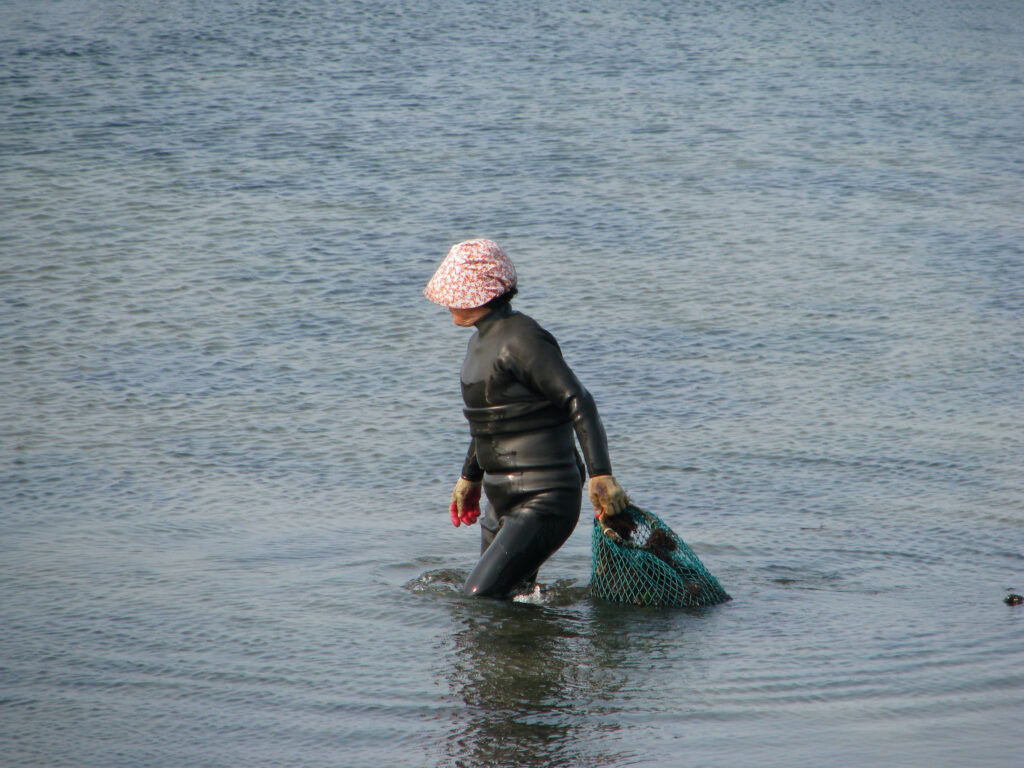
Here we find another striking coincidence, for those who are conversant with the aboriginal tribes of Formosa say that the same is true of them. The women are much superior to the men in physique and in general appearance. A member of the Imperial Chinese Customs Service once related to the writer how he made a journey into the very fastnesses of the Formosan mountains and visited the homes of the dreaded head-hunters. He was blindfold and led all the way by a bodyguard of women. He declared that the younger women of that tribe were among the handsomest women in the world. The reason why he was led by women was because in this way he could pass through other hostile tribes unmolested, since no one would attack women. All peaceful expeditions of the kind were so led.
But in spite of the energy of the Quelpart dames the people are very poor. Their food, their houses, their clothes, are all far inferior to those of the dwellers upon the mainland. Dog-skins are extensively used in making clothing. Caps, overcoats, leggings, and socks are frequently made of this skin, with the hair on the outside. Such garments are handed down from father to son, and time adds to their flavour. Ordinarily the people use imported cotton cloth, which is made more durable by dipping into the juice of the wild persimmon. This imparts a dirty brown colour, which obviates the necessity of frequent washings. Many of the men wear broad-brimmed hats of coarse felt like those of the chaircoolies of Seoul, but much larger. They measure about two feet from brim to brim.
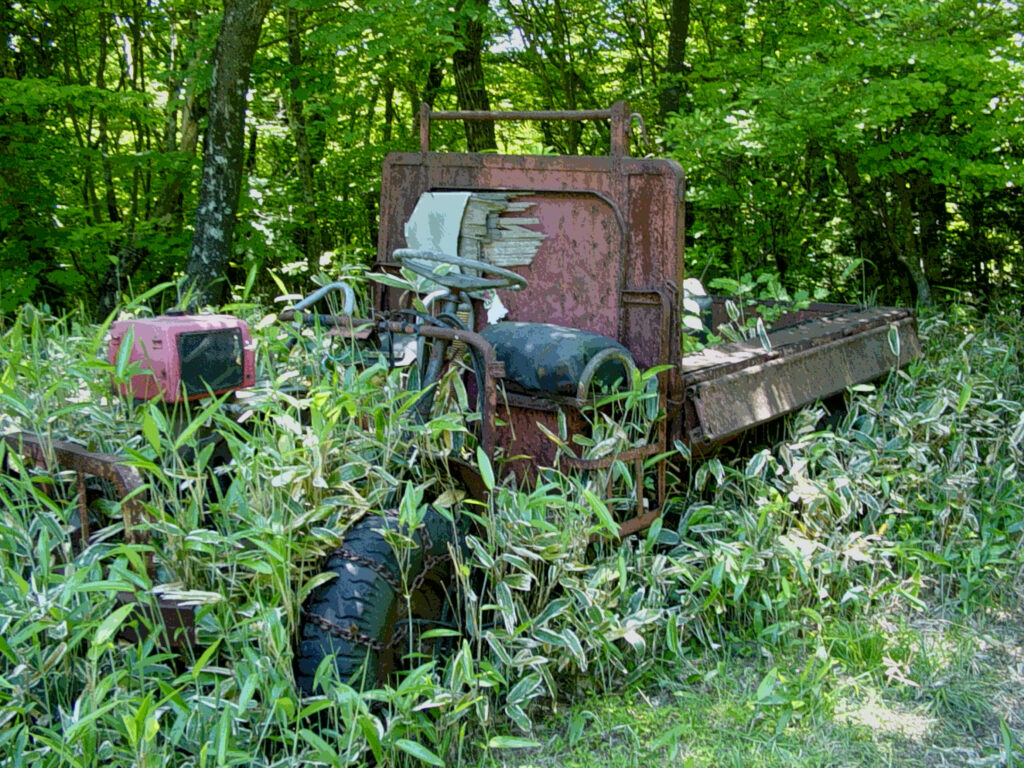
The Quelpartian is differentiated from other Koreans in various ways. The ordinary Korean has adopted a form of kang from the Chinese. It consists of making flues beneath the floor for heating the room. This has never been adopted by the people of Quelpart. They dig a hole in the ground and build a fire in it, and about this fire they eat and sleep and live. It should be added that in the large towns the official and wealthy classes have followed largely the customs of the mainland in most respects. But we are dealing with the common people, and not with exceptional cases. For the most part, the houses are thatched; and on account of the high winds that prevail, these thatches are held down with a mesh of thick straw-rope net.
The trade of the island is inconsiderable. A few shops in the main towns supply what cotton-shirting is necessary, but the markets that are held in all large towns on the mainland every five days are not known here. A little trade in foreign needles, thread, and nails is done.
The exports from the island consist of seaweed, medicinal plants, cosmetic oil, horses and cattle. The oil is pressed from the seeds of the Datura Stramonium, which is an ever-green growing luxuriantly all over the southern portion of the island. It blooms in February and puts forth beautiful crimson flowers. It is rare on the mainland.
It is a singular thing that an island like this should have been the breeding-place for the hardy Korean pony. Outside of Korea, such horses are found nowhere in Eastern Asia, excepting in the Malay Peninsula. They have nothing in common with the Manchu or Mongol pony. The theory of a southern origin would help to explain how an outlying island like this could become the breedingplace of these animals. In winter the animals, both horses and cattle, wander over the island at will; but in summer they are driven into the hills, to save the fields from being ruined. The many stone walls about the fields on the upper levels are made partly to get rid of the stones and partly to keep out the live stock. No small part of these beasts belong to the Government, and an official is especially appointed to look after them; but we imagine that in these degenerate days the custom is honoured more in the breach than in the observance. The laxness of the Government is reflected in the people, who are not at all scrupulous as to the meum and teum in horse-flesh.
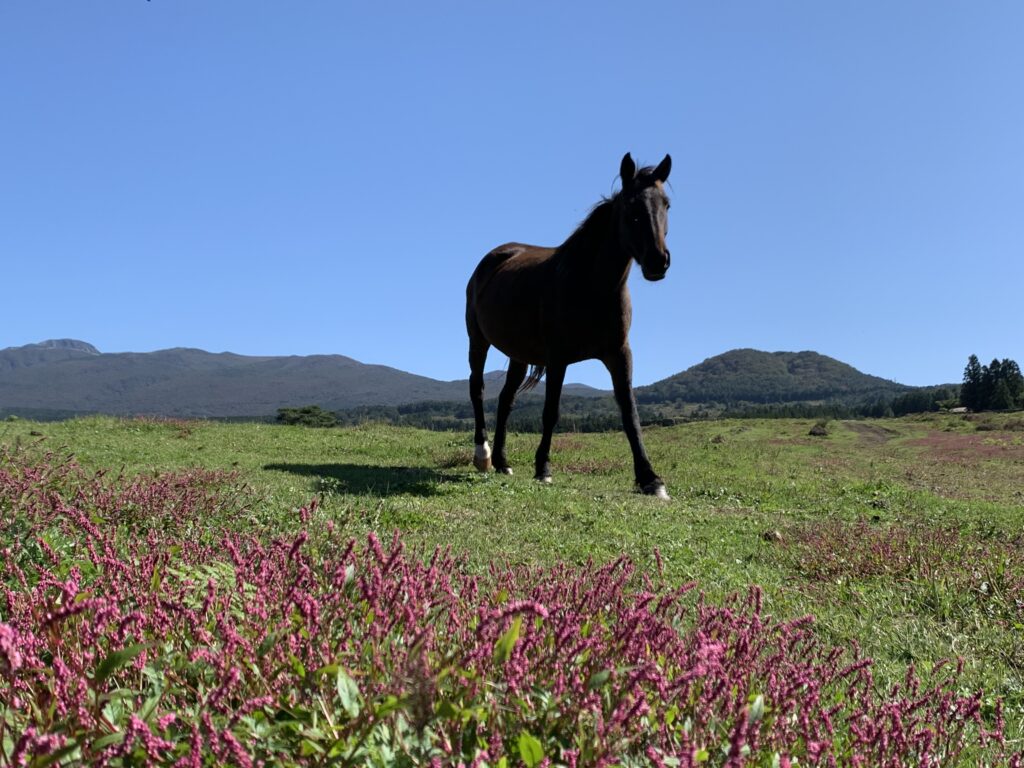
The religious ideas of the Quelpartians are very crude. At each of the three prefectural towns there is, of course, the regulation Confucian shrine, and near the gates are placed numbers of idols cut out of lava, but, as a rule, the people believe in all sorts of spirits and goblins, and fetich-worship satisfies best their religious feelings. Buddhism once prevailed here, as elsewhere in Korea, but a century or so ago a zealous Confucian Governor drove out all the Buddhist monks and destroyed the monasteries. To-day the Roman Catholics have a considerable following on the island; and two years ago a serious affray occurred between them and the unbelievers. The real cause of this has never been satisfactorily explained, but it is certain that the fault was not all on either side. They assume mourning for only 100 days after the death of a parent, though the usual custom of Korea is to keep it on for three years. In the first and second moons they assemble at the spirit shrines and erect twelve poles, on which they hang masks like horses’ faces and dress them in silk. This has something to do, evidently, with the horsebreeding proclivities of the people. There are said to be many snakes and centipedes on Quelpart. If a person meets a gray snake he will not harm it, for he considers it to be superhuman. On the fifteenth of the eighth moon they have a great festival, at which they have a monster tug-of-war, the men pulling at one end and the women and children at the other.
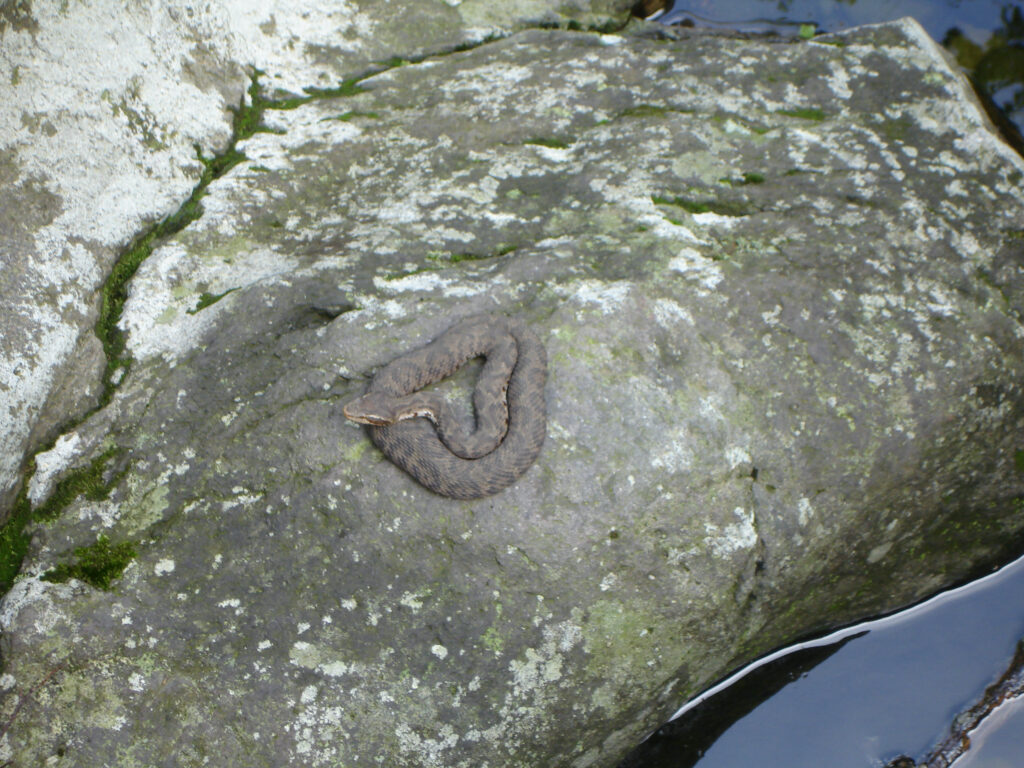
There are few sights worth seeing on Quelpart. On the west side there is a cliff called Cha-am or “Treasure Cliff.” It is shaped like a house with a rounded roof, and beneath it there is a cave. The “treasure” consists of a substance called “the milk of the stone-drum”-whatever that means. Near Ta-chung a pinnacle of rock rises to a height of eight hundred feet, and in its southern face, three hundred feet up, there is a cave, the view from which is said to be magnificent. The cave was once used as a Buddhist monastery. On the southern side of the island there are two curious waterfalls, some ten miles apart. They are almost exactly alike, and are formed by streams falling into circular holes in the rock. These holes are thirty feet wide by forty deep. Near the top of Old Hal-la there stands a row of statuesque rocks that the Koreans call “The Five Hundred Heroes.” It has been said that the spot where the three mythical founders of T’am-na arose from the ground is still shown, but the foreign gentlemen already quoted could find nothing about it on the island. But the great geographical work already mentioned says specifically that the place lies two Ii south of the town of Che-ju, and, if it were looked for carefully, there is little doubt that some trace of the story could be found in the vicinity.
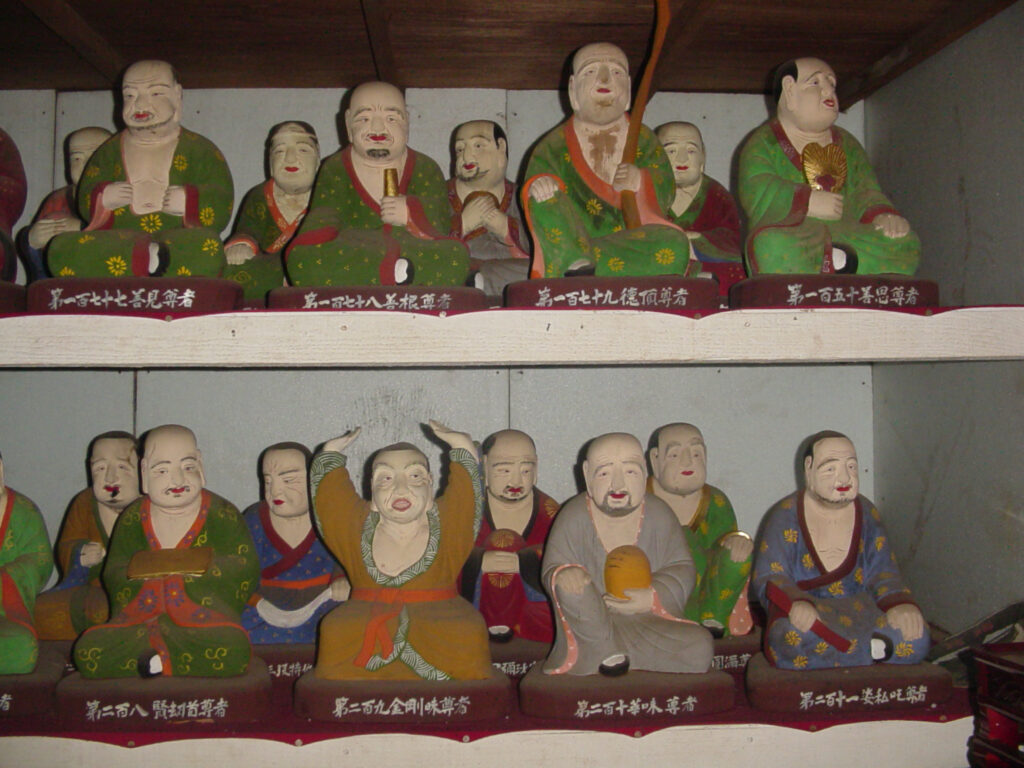
Just east of this same town there is a flat strip of land between the sea and the abutting cliffs which is called the Koryung Plain. In the days of the Tang dynasty in China (618-905) a Chinese boat was wrecked at this place. It was loaded with precious objects, and it is said that the waves washed up many of these. Centuries after the farmers would occasionally plough up one of them.
The stories told about Quelpart, its mountains and hills., are very numerous and interesting from the standpoint of folk-lore. We can give here only a few as samples of their general style. The spirit of Hal-la Mountain had a younger brother who assumed human shape. When he died the people built a shrine in his honour and called it “Broad Earth Hall.” But a man named Ho-jung, of the Song Kingdom in China, came and desecrated it. The spirit took the form of a hawk and perched upon the mast of the bad man’s boat and a gale from the north shattered and wrecked it.

Near Chung-wi – so legend says – there once lived an immense serpent, to which an annual offering of a young maiden had to be made or else rain would not fall, horses and cattle would die, and sickness would prevail among the people. A certain gentleman whose daughter’s turn had come rebelled against this ophidian imposition, and on the appointed day, instead of sending his daughter, he went himself, armed with a sharp axe. The monster protruded its head from its lair, expecting to find a succulent maiden to eat, but received a new sensation in the shape of a sharp blow, which severed its head. This apparently rid the island of the pest. But the end was not yet. The man cut the serpent into small pieces and enclosed them securely in a large sauerkraut jar. At first the people rejoiced, but soon they found that the serpent came to them every night in their dreams and threatened them with a variety of horrors in case they did not let him out of pickle. They finally did so, and each piece became a separate and entire snake. But even as his body had been divided, so his power was dissipated, and no more maidens had to be served up for his delectation. To make assurance doubly sure, the people still sacrifice a pig yearly on the spot where he lived and serve it up to his spirit with rice and wine.
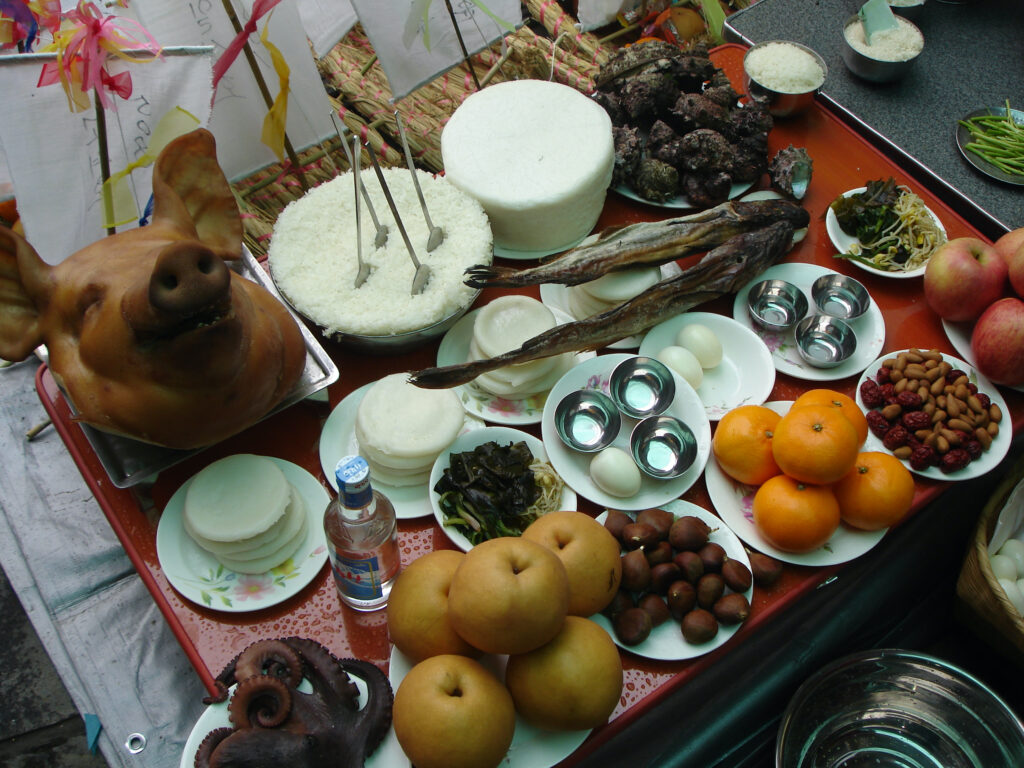
Another story relates how the Buddhist monks used to assemble at the foot of Hal-la on a certain day each year and choose one of their number by lot to enjoy the experience of translation. The chosen man would ascend to a certain lofty ledge of rock and immediately a white cloud would roll down the mountain-side, envelop him and then drift away, leaving the rock tenantless. He had manifestly been translated to the habitations of the gods. A certain Governor was sceptical, and proposed to accompany this novel expedition once and see the wonder with his own eyes. Arriving at the foot of the mountain about dark, they camped for the night, sleeping within a ring of fire for fear of the serpents which infested the place. The Governor insisted that they choose the fortunate man before they retired. Then they all lay down and went to sleep – all but the Governor, who sat smoking his long pipe. When they were all wrapped in slumber he went and lay down beside the chosen man, whose approaching felicity by no means interfered with his night’s rest, and began puffing tobacco smoke into his clothes until they were covered with little brown spots of nicotine. Morning came and the monks all stood in an ecstasy of expectation, while their more fortunate comrade climbed the steep path. He mounted the ledge, and almost instantly the white cloud shot down from a cleft in the rock far above. It hid him from view for a moment, and then drifted away, showing the ledge bare as the day it was created. A murmur of awe went through the company, and they all fell on their knees in awe and adoration except the Governor, who bade them wait a moment and keep their eyes fixed on the cleft of the rock from which the cloud had come. A moment later the figure of a man was seen leaping down the mountain’s side, and soon their comrade rushed into their midst and fell exhausted. When he revived he told them that the moment he reached the ledge he saw the head of a monster serpent protrude from the cleft of rock and blow a cloud of vapour down upon him. An instant more and the coils of the serpent were around him, and he was swiftly raised to its lair. The serpent dropped him upon the floor of the cave, which was strewn with dead men’s bones; but though it seemed desirous of devouring him, it would throw its head this way and that as if in doubt about something. He slowly backed out of the cave and took to his heels, with the result related. The Governor smiled and pointed to the spots on his garments. There were no more attempts at apotheosis.
